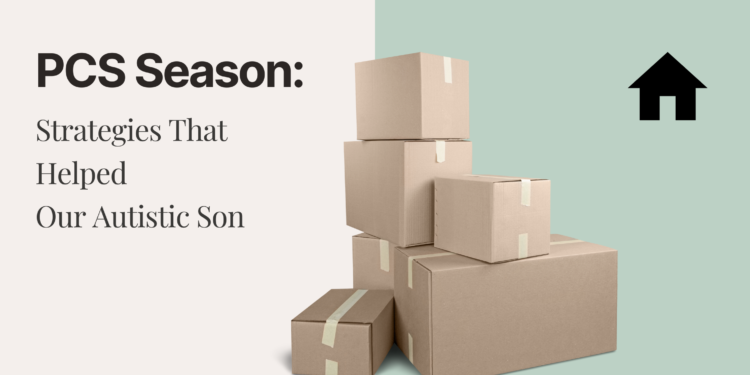The time came. Order’s had dropped, EFMP approved, and decisions were being solidified regarding packing the house. Everything was lining up, but there was one pressing point on the checklist that required the most mental stamina…preparing my routine driven, autistic child, Grahame.
Our first PCS our son was 5 months old, so besides packing the essentials, he was none the wiser. However, this one was different. He established a routine with his therapies, he was familiar with the area, friends who were now “aunts” and “uncles” were a part of weekly dinners, and he was comfortable. There were some strategies that we used that set up the PCS season the way that my son processes best, but can be used for all children, neurodivergent and typical alike.
Create a Social Story
We created a social story that went into detail of the events that were going to take place within the next few weeks. We didn’t want to start showing too early as he was quite young, but with older children who understand the concept of time, it can be done so much earlier. The social story was written from a first person perspective putting him at the center of the narrative.
For example, one page said, “We will put many things in the boxes. I will put clothes and toys in the boxes. They will go to our new home and I will see them again.” We made sure to add that they will be seen again, as seeing all your favorite items packed can cause anxiety. Another tip is to include real life photos of familiar items. On the page that stated, “We will say ‘bye-’bye’ to our home, and drive to our new home,” we included a picture of our actual car, and a picture of our house to be. By doing this, one, he recognized our car, and two, he saw the new house and was able to register that was our new home when we arrived. This eased anxiety immensely. He even called it “new house” for months after we had moved in because the social story helped identify that. Last, we included some strategies for how to address the emotions that come with moving. One slide said, “If I get sad, I can ask mommy or daddy for leg ‘squeezies’ or to play with some toys.” This slide led to open discussions surrounding his emotions around the move.
Visual Calendar
One of the ways that we help Grahame understand how many days are left is with a visual calendar. As he is so young, we keep it simple without the need for actual dates. Each date he removes a velcro picture from his calendar. We started this during my husband’s frequent TDY’s, so the images are airplanes as he knows “daddy is on the airplane,” but the visual can be specific to your child. For the move, the image can be boxes, or a moving truck, or different pictures for what is the event for that day. Our son taking down an airplane each day helped set up his own personal calendar of what’s expected and what’s to come.
PPM or DITYMove
This was actually something that helped Grahame, but we didn’t realize till hindsight. While doing the move this way with a 3 year old and a 6 month old was hard, with the help of our very committed (and list-making) friends, we were able to get it done. However, when reflecting on the days prior while sitting in our now empty living room, we realized how the slow transition of seeing boxes packed helped Grahame see gradual change, rather than abrupt change. While I wouldn’t recommend this style of move for everyone, for our family it really eased the transition.
There are so many tips and tricks out there for PCS Season, and while this list is definitely not exhaustive, these are tools that when implemented well, can help ease the anxiety of the season.








